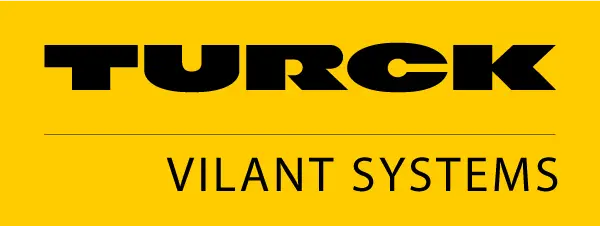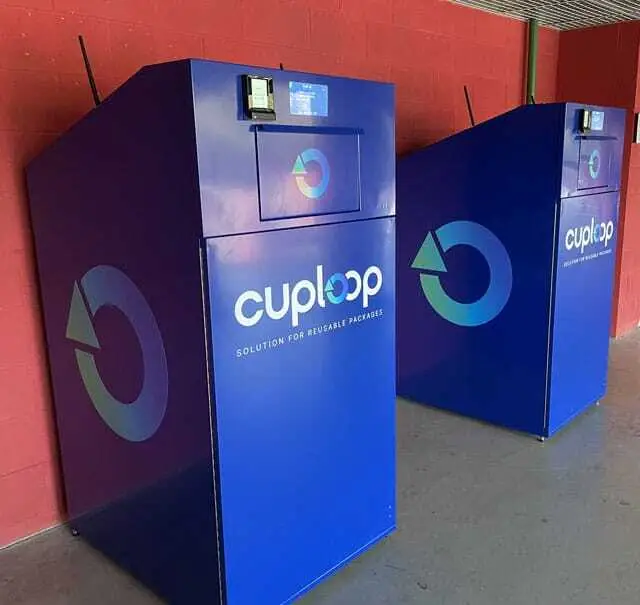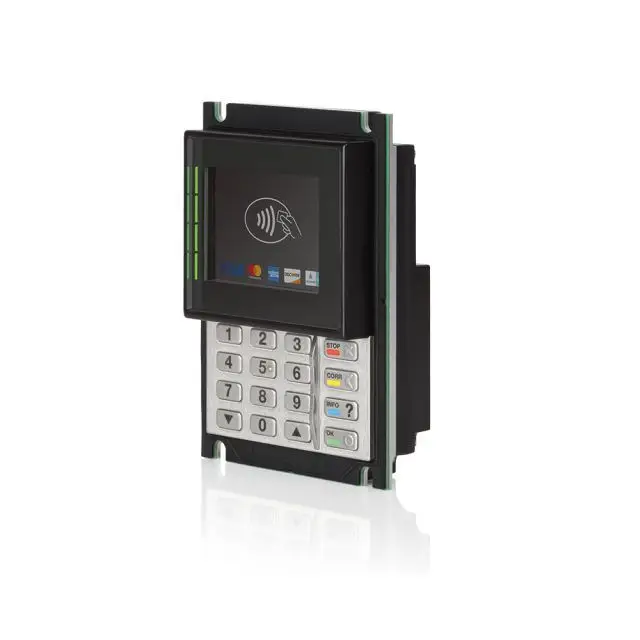What is IoT Payment?
IoT payment describes the integration of IoT devices into payment transactions to enable automated payment processes. The use of sensors and networked devices such as smart watches or NFC-enabled smartphones is driving digitalization and automation in payment transaction management. The focus here is on the simple and secure processing of payments.
Various wireless technologies such as 5G payment, GPS payment, UWB payment, RFID payment and NFC payment are being used. These payment solutions enable contactless payments and speed up payment processes. Payment with wireless technologies also includes barcode payment, which is based on the scanning of codes. These payment solutions are increasingly integrated into modern transaction systems and contribute to the digitalization of payment transactions.
Internet of Payment (IoP)
Internet of Payment (IoP) technology plays a central role in the context of IoT payment. Here, payment transactions are initiated and processed by IoT devices without the need for extensive user input. One example of this is the pay-per-use business model, in which usage fees are automatically recorded and billed directly via IoT devices.
Distributed Ledger Technology (DLT)
Modern technologies such as distributed ledger technology (DLT) and smart contracts ensure transparent and forgery-proof documentation of transactions. This is particularly important for fraud prevention. By using DLT and technologies such as the IOTA protocol or blockchain systems, every payment is documented in a tamper-proof manner and protection against misuse is ensured at the same time.
Micropayment Models and Peer-to-Peer Payments
IoT-based payment systems also offer new approaches for micropayment models and peer-to-peer payments. Automated payment processes, for example through GPS or wireless payment, open up completely new possibilities in the networked world of machine communication (M2M). The SEPA payment system remains an important component of payment processing in Europe and is increasingly being supplemented by innovative IoT solutions.
The combination of digitalization, automation and advanced technologies makes IoT payment a central component of the IoT megatrend and is driving the development of new payment solutions.
RFID Payment Systems and NFC Payment
RFID payment systems and NFC payment enable contactless, fast and secure payment without direct physical contact with the checkout system.
RFID (Radio-Frequency Identification) is based on wireless communication between an RFID chip, e.g. in an RFID card, and an RFID checkout system. This technology is primarily used where fast and reliable transactions are required. NFC (Near Field Communication) enables payments over short distances using a smartphone or NFC card. NFC contactless payments are widespread and are used by both consumers and retailers.
Both technologies simplify and secure payment processes and offer effective solutions for modern payment transactions.
RFID and NFC payments are based on similar principles of wireless data transmission, but differ in terms of functionality and range.
RFID payment uses an electromagnetic field to activate a chip in an RFID card, which transmits the payment information to a reader. The range is up to several meters, which makes it suitable for applications such as access control or transport systems.
NFC payment works with a range of around 4 cm and enables bidirectional communication between an NFC device, e.g. a smartphone, and the checkout system. Payment is triggered by approaching the device, often supplemented by security protocols such as two-factor authentication.
What is Mobile Payment?
Mobile payment (M-Payment) describes contactless payment with mobile devices at the point of sale (POS). This often involves the use of a smartphone with an integrated NFC chip, which enables payments to be made via a special payment app.
Technologies such as Bluetooth, NFC and WLAN establish a wireless connection between the end device and the POS system.
In Germany, Apple Pay, Google Pay, Payback Pay and Samsung Pay are among the largest providers of mobile payment. They offer secure and fast payment solutions via mobile devices.
What is E-Payment?
E-payment refers to electronic payment transactions, which play a central role in online retail in particular. It enables payments to be processed via digital platforms and offers a convenient and fast method of carrying out transactions online.
Common e-payment methods include PayPal, one of the most popular electronic payment methods, as well as Sofortüberweisung, Amazon Payments, ClickandBuy and Google Wallet. These systems make it possible to process payments securely and in real time over the Internet. E-payment simplifies the purchasing process and contributes to efficiency in online retail.
What is Digital ID in the Context of Payment?
The digital ID in the payment sector makes it possible to use a digital identity securely for payments and identification. Digital ID wallets such as the EUDI Wallet (European Digital Identity Wallet) and the LOOP Wallet from any2any are used for this purpose. These digital wallets in the form of apps store payment cards, health data, government documents and other sensitive personal information.
The LOOP Wallet from any2any, for example, provides a platform for any2any payments and supports the integration of various payment options and digital identity functions. It enables the storage of credentials and the execution of digital payments.
Digital payments become more secure through the use of digital ID, as it enables identity verification online and in-store. These identity wallets improve the shopping experience through personalization and promote customer engagement. The European Digital Identity (eID) provides a unified solution to digitally verify credentials such as financial data and authorizations.
Digital ID platforms such as Apple Wallet, Google Pay and Paytm combine payment processing with secure identification for online and in-store transactions, making the payment process more efficient and user-friendly.
What is Tokenization?
Tokenization in the area of payment describes the process in which card data is replaced by a digital money token. This token is used for transactions instead of the actual card data, which increases security. Security through encryption plays a central role here, as the sensitive information is protected and made more difficult to access.
In the context of digital payments, tokenization makes payments more convenient as it can be used with platforms and services such as online platforms or M2M offline payments. In addition, the automatic updating of tokens enables seamless use in the event of expired or changed card data.
A practical example is tokenized toll payments, which save time when travelling as the payment process is automated and secure.
Security and Authentication
Fraud prevention and protection against misuse are of central importance in IoT payment. The IOTA protocol, blockchain and distributed ledger technologies (DLT) are used here. They guarantee the documentation and security of transactions. Two-factor authentication and smart contracts also increase security.
The PSD2 directive established standards for Strong Customer Authentication (SCA). This distinguishes between merchant-initiated transactions (MIT) and customer-initiated transactions (CIT) and ensures secure payment transactions through strict security requirements.
Various methods are used for authentication, including PKI (Public Key Infrastructure), OAuth and OIDC (OpenID Connect). These protocols enable secure verification of identity.
Standards such as OAM, DM, LWM2M and TR-069 ensure interoperability and security in the IoT sector. Important authentication protocols include the FIDO Universal Authentication Framework (UAF), which is based on biometrics, and the EMVCo specifications for 3-D Secure (3DS). They increase the security of online payments and minimize the risk of misuse. OpenID Connect offers an additional option for secure authentication for digital services.
Products to Set Up an IoT Payment System
An IoT payment system requires a combination of hardware and software to enable secure and efficient payments. Key hardware components include EMV chip cards, such as credit or debit cards, which are used for contact-based and contactless transactions. Host card emulation technology, which allows mobile devices such as smartphones to digitally simulate physical cards, is also relevant.
RFID cards enable contactless payments through the use of radio technology. The NFC chip in devices such as smartphones and smartwatches and the NFC interface are essential for processing near-field communication-based payments. QR codes, which are scanned with smartphone cameras, are also used to initiate transactions.
On the software side, mobile wallets and payment services play a crucial role. These apps store payment information and enable transactions to be processed quickly and securely. Together, these hardware and software components create the basis for a modern IoT payment system.
Facts & Figures
According to statistics from 2020 from OmniQuest, 47.7 percent of Germans use mobile payment as a payment method. The 30 to 39 age group uses this payment option most frequently. Households with more than one person tend to use mobile payment more: 64.9 percent of households with three people and 68 percent of households with four people use this technology.
The most common reasons for not using mobile payment include security concerns for 16.1 percent of respondents and data protection concerns for 14.7 percent.
In Germany, 8 out of 10 people use PayPal, making it the most frequently used payment platform. In second place is the NFC chip on mobile devices or wearables, which 23.1 percent of Germans
Successful Real-Life Examples of Contactless Payment
Contactless payment systems are increasingly being used in human-to-machine (H2M) and machine-to-machine (M2M) solutions. One example from the fitness sector is fitness centers or gyms where memberships are charged and processed contactlessly. Hotels and short-term rentals offer usage-based electronic devices that are activated via mobile payment.
In shared offices and co-working spaces, hot-desking enables time-based and contactless payment for workstations. Microinsurance companies use geo-location-based technologies to offer flexible travel or car insurance.
In the mobility-as-a-service sector, bicycles, cars and parking spaces are shared contactlessly via mobile payment. In the B2B sector, the replacement and maintenance of appliances such as coffee machines, washing machines and vending machines is also automated and based on consumption. These examples show the wide range of possible applications for contactless payment solutions in various sectors.
Payment via RFID at ProMart

The unmanned self-service stores of the Finnish wholesaler ProMart use an RFID solution from Turck Vilant Systems. Here, payment is made automatically in the scanning area. After selecting the desired products to buy, lease or rent, the customer enters the reading area and identifies themselves using an RFID card. The goods are placed on a table and automatically scanned by an installed RFID reader. The system settles the purchase with the linked company account.
The unmanned self-service stores of the Finnish wholesaler ProMart use an RFID solution from Turck Vilant Systems. Here, payment is made automatically in the scanning area. After selecting the desired products to buy, lease or rent, the customer enters the reading area and identifies themselves using an RFID card. The goods are placed on a table and automatically scanned by an installed RFID reader. The system settles the purchase with the linked company account.

Ensuring the functionality of the reading area was the biggest challenge. The readers are only allowed to scan the selected products. To achieve this, each EasyMart has a separate reading area that only allows access to one person at a time. This ensures that only their selected items are registered for their shopping cart. Tests show that the system works one hundred percent.

Jessica Säilä
Head of Marketing
Hardy Barth Charging Stations with E-Payment

In collaboration with Legic Identsystems, eCharge Hardy Barth has developed EV charging stations that offer real-time user authentication and a secure e-payment function. Both open and closed contactless payment options are supported. With Legic Connect, charging, payment and other services can be used via smartphone.
In collaboration with Legic Identsystems, eCharge Hardy Barth has developed EV charging stations that offer real-time user authentication and a secure e-payment function. Both open and closed contactless payment options are supported. With Legic Connect, charging, payment and other services can be used via smartphone.

With additional customer loyalty services via app or smart card, eCharge Hardy Barth supports the growing ecosystem around charging stations.

Hardy Barth
NFC Payment at Cuploop

The Estonian start-up Cuploop has developed a reverse vending machine for the automatic return of reusable packaging. RFID chips are integrated into cups or food containers that can be purchased on site at events. These are returned to the reverse vending machines. By tapping a contactless bank card or smartphone on the machine's payment terminal, customers receive the deposit amount back via the NFC transaction.
The Estonian start-up Cuploop has developed a reverse vending machine for the automatic return of reusable packaging. RFID chips are integrated into cups or food containers that can be purchased on site at events. These are returned to the reverse vending machines. By tapping a contactless bank card or smartphone on the machine's payment terminal, customers receive the deposit amount back via the NFC transaction.

We wanted to make the return process as quick as possible. For example, when tens of thousands of concertgoers go to the exit and want to return their reusable packaging, it takes too long to read the labels individually with barcodes or QR codes. You can put 40 cups in our machine at once and they are read immediately. We see the biggest advantage when the amount of packaging increases. When most suppliers switch to reusable packaging, it is impossible to read large quantities of packaging with barcodes or QR codes. With our system, thousands of packages can be read and tracked instantly.

Lauri Luik
CTO
Success Stories on Payment with IoT
Advantages of Mobile Payment
Advantages of Wireless IoT
- Faster payment process
- More hygienic
- Seamless documentation
- Traceability
- Increased convenience
Mobile payment offers numerous advantages compared to conventional payment methods. One key aspect is that no small change is required, which simplifies the payment process. The payment process is also significantly faster, as transactions can be processed quickly using a smartphone or wearable.
Every payment is fully documented, which makes it easier to verify money movements. Another advantage is the increased hygiene compared to cash or cards, as no direct contact is required.
Occasional theft is made more difficult by mobile payment, as no physical amounts of money are carried. There is also no risk of counterfeit money. Mobile payment is also particularly suitable for blind people, as no physical interaction with money or cards is required. As the smartphone replaces the wallet, no additional space is required for a wallet.
Mobile payment offers numerous advantages compared to conventional payment methods. One key aspect is that no small change is required, which simplifies the payment process. The payment process is also significantly faster, as transactions can be processed quickly using a smartphone or wearable.
Every payment is fully documented, which makes it easier to verify money movements. Another advantage is the increased hygiene compared to cash or cards, as no direct contact is required.
Occasional theft is made more difficult by mobile payment, as no physical amounts of money are carried. There is also no risk of counterfeit money. Mobile payment is also particularly suitable for blind people, as no physical interaction with money or cards is required. As the smartphone replaces the wallet, no additional space is required for a wallet.
Advantages of Wireless IoT
- Faster payment process
- More hygienic
- Seamless documentation
- Traceability
- Increased convenience
Challenges with Mobile Payment and IoT Payment
Mobile payment and IoT payment offer numerous advantages, but there are also some challenges. One of these is that anonymous payments are not possible, as all transactions can be digitally recorded and traced. This raises data protection issues, particularly with regard to anonymous payments and the storage of personal data.
Another problem is the increased time required for certain payment processes, especially if the connection to the bank is delayed or authentication requires additional steps. There is also a lower inhibition threshold when paying, which can lead to careless spending. Checking the account balance is only possible via a direct bank connection, which complicates the process in real time.
Reversing exchanges or returns is also often more complicated than with traditional payment methods. One technical obstacle is that mobile payment only works if the end device has sufficient power or battery capacity.
In connection with IoT payment, questions arise regarding machine identity, which is crucial for the secure processing of machine-to-machine (M2M) transactions. There is also a risk that money laundering could be made easier if security mechanisms are circumvented. Data protection and IT security are therefore of central importance in mobile and IoT payment in order to minimize risks.
Suppliers of IoT Payment Solutions
Outlook – Next Level Payment
Artificial intelligence and blockchain technology are revolutionizing the payment sector by enabling autonomous and secure, decentralized transactions, especially in IoT payment, where machines process payments independently and efficiently.
Trend: Blockchain
Blockchain technology enables secure, cryptography-based transactions in the payment sector. Its decentralized structure and transparency make manipulation more difficult. In combination with edge computing, transactions can be processed more efficiently. This technology could become particularly important in IoT payment, as machines can carry out transactions directly and securely with each other.
Trend: AI
Artificial intelligence (AI) is changing the payment sector through autonomous payment, where payments are made automatically and without human interaction. AI analyzes transaction data, recognizes patterns and improves security by preventing fraud. In IoT payments in particular, AI enables machines to process payments autonomously and make the payment process more efficient.





-19-3-25-responsive.webp)











